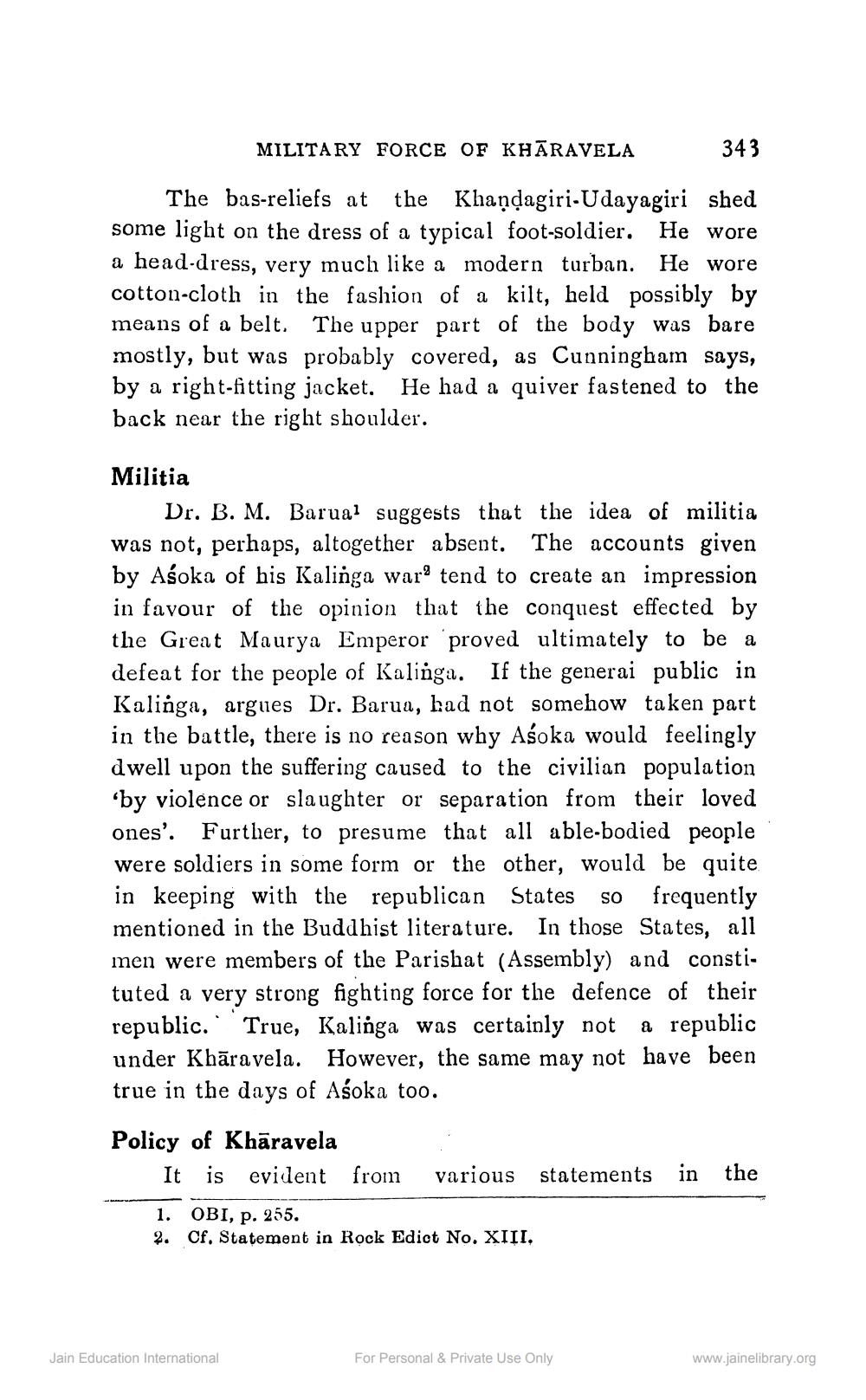________________
MILITARY FORCE OF KHĀRAVELA
343
The bas-reliefs at the Khaņdagiri-Udayagiri shed some light on the dress of a typical foot-soldier. He wore a head-dress, very much like a modern turban. He wore cotton-cloth in the fashion of a kilt, held possibly by means of a belt. The upper part of the body was bare mostly, but was probably covered, as Cunningham says, by a right-fitting jacket. He had a quiver fastened to the back near the right shoulder.
Militia
Dr. B. M. Barual suggests that the idea of militia was not, perhaps, altogether absent. The accounts given by Aśoka of his Kalinga war? tend to create an impression in favour of the opinion that the conquest effected by the Great Maurya Emperor 'proved ultimately to be a defeat for the people of Kalinga. If the generai public in Kalinga, argues Dr. Barua, had not somehow taken part in the battle, there is no reason why Aśoka would feelingly dwell upon the suffering caused to the civilian population 'by violence or slaughter or separation from their loved ones'. Further, to presume that all able-bodied people were soldiers in some form or the other, would be quite in keeping with the republican States so frequently mentioned in the Buddhist literature. In those States, all men were members of the Parishat (Assembly) and constituted a very strong fighting force for the defence of their republic. ''True, Kalinga was certainly not a republic under Khāravela. However, the same may not have been true in the days of Asoka too.
in
the
Policy of Khāravela
It is evident from various statements 1. OBI, p. 255. 2. Cf. Statement in Rock Edict No. XIII,
Jain Education International
For Personal & Private Use Only
www.jainelibrary.org




